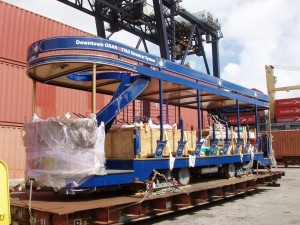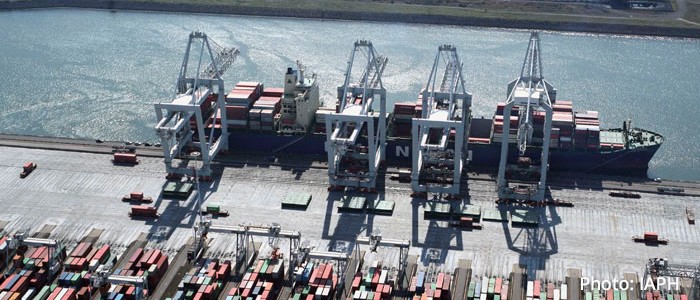
Ocean Freight
Overseas Brokers offers a full range of ocean freight services. Licensed as an NVOCC (non-vessel operating common carrier) and as an OTI (ocean transportation intermediary), we maintain a tariff on file with the Federal Maritime Commission. Our status as an NVOCC enables us to contract the services of any ocean carrier without being bound to specific carriers and quotas. Our clients benefit from the widest range of options in selecting the optimal routing and carriers for any given shipment. We can offer very competitive pricing through the use of volume service contracts with all major carriers.
Overseas Brokers offers the following types of ocean freight services:
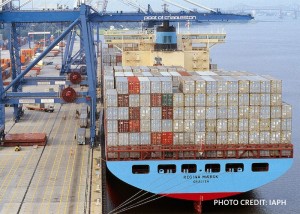 FCL (full container load): Shipping by container affords the fastest, safest and most cost-effective mode of transportation by sea. Containers can be brought directly to the supplier’s loading dock and delivered directly to the consignee’s loading dock. For shipments from multiple suppliers we consolidate the goods at one of our warehouses near the optimal port of loading depending on the specific destination. Typical container types are 20’, 40’, 40’ high cube, 45’, open top, reefer (refrigerated), flat rack, and artificial tweendeck. Some ships are also equipped to handle 48’ and 53’ road trailers.
FCL (full container load): Shipping by container affords the fastest, safest and most cost-effective mode of transportation by sea. Containers can be brought directly to the supplier’s loading dock and delivered directly to the consignee’s loading dock. For shipments from multiple suppliers we consolidate the goods at one of our warehouses near the optimal port of loading depending on the specific destination. Typical container types are 20’, 40’, 40’ high cube, 45’, open top, reefer (refrigerated), flat rack, and artificial tweendeck. Some ships are also equipped to handle 48’ and 53’ road trailers.
LCL (less than container load): Smaller shipments that do not justify the expense of an entire container are rated based on their volume and weight. The cost of shipment is prorated based on the relative share of volume and weight of the shipment in a consolidated container. Consolidated containers are shipped weekly to many destinations on a direct basis. For those destinations where there is no direct service from the origin point, the shipments are routed on a weekly basis to major shipping hubs and transshipped from there to destination via regularly scheduled consolidations.
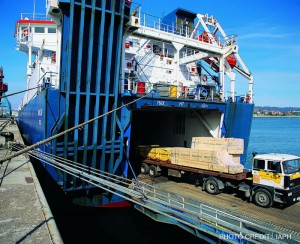 RO/RO (roll on/roll off): RO/RO vessels are ships dedicated to transporting cars, trucks, boats on trailers or cradles mounted on mafi trailers, road trailers, tractors, agricultural vehicles, railcars, and any rolling cargo with wheels. Cargo is driven or towed on board by means of an access ramp, and parked and secured with tie-downs in dedicated parking slots.
RO/RO (roll on/roll off): RO/RO vessels are ships dedicated to transporting cars, trucks, boats on trailers or cradles mounted on mafi trailers, road trailers, tractors, agricultural vehicles, railcars, and any rolling cargo with wheels. Cargo is driven or towed on board by means of an access ramp, and parked and secured with tie-downs in dedicated parking slots.
LO/LO (lift on/lift off): LO/LO vessels are self geared ships that lift cargo on and off by means of an on-board crane or derrick. They can carry containers and oversize cargo that cannot fit in a container. They can also carry equipment that is too large for a RO/RO vessel.
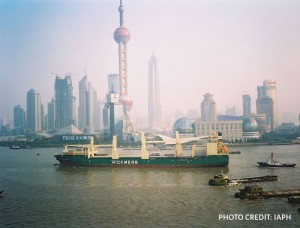 Break Bulk: Break bulk vessels are used for general cargo that is not moved in containers. These vessels are typically used for products that are bagged, baled, bundled, or loaded in drums or on pallets. Loading is done by crane or derrick, usually from port warehouses that store the product until vessel arrival. These vessels are also useful for shallow water ports and ports with undeveloped facilities for container handling.
Break Bulk: Break bulk vessels are used for general cargo that is not moved in containers. These vessels are typically used for products that are bagged, baled, bundled, or loaded in drums or on pallets. Loading is done by crane or derrick, usually from port warehouses that store the product until vessel arrival. These vessels are also useful for shallow water ports and ports with undeveloped facilities for container handling.
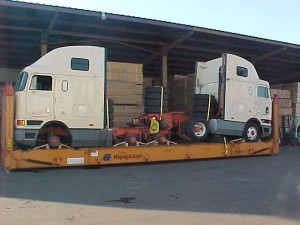 Flat Racks: Flat racks are containers with a floor and front and rear end walls that are collapsible. Flat racks have no side walls or roof so that they can carry over-width and over-height cargo on containerships. Flat racks are typically loaded at warehouses outside the port where the cargo is lashed to the flat rack, inspected to ensure the cargo is secure and then delivered to the port ready for loading on board a ship.
Flat Racks: Flat racks are containers with a floor and front and rear end walls that are collapsible. Flat racks have no side walls or roof so that they can carry over-width and over-height cargo on containerships. Flat racks are typically loaded at warehouses outside the port where the cargo is lashed to the flat rack, inspected to ensure the cargo is secure and then delivered to the port ready for loading on board a ship.
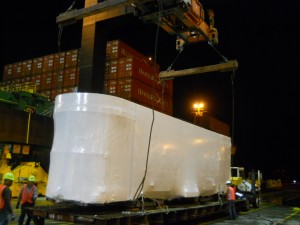 Heavy Lift, Oversize and OOG (out of guage): Heavy lift project cargo refers to oversize, overweight or out of guage pieces that cannot be shipped in standard containers or on flat racks. In some cases cargo that exceeds the width or height of a container can be loaded on a flat rack with an overhang that would displace other container slots on a containership. Flat racks with an overhang are considered out of guage (OOG). If the cargo exceeds the maximum allowable overhang for a flat rack, it is shipped as break bulk cargo on heavy lift LO/LO vessels or as rolling cargo on RO/RO vessels. Our carrier relationships and experience with over-weight and over-dimensional cargo enable us to offer the most cost effective solutions for safe transport and handling. Oversize or overweight shipments are inspected for safe lifting and lashing onboard by National Cargo Bureau maritime inspectors to ensure safe handling. In order to ensure safe door-door handling, our services extend beyond traditional port to port handling. The following additional services are offered to provide end to end project cargo management:
Heavy Lift, Oversize and OOG (out of guage): Heavy lift project cargo refers to oversize, overweight or out of guage pieces that cannot be shipped in standard containers or on flat racks. In some cases cargo that exceeds the width or height of a container can be loaded on a flat rack with an overhang that would displace other container slots on a containership. Flat racks with an overhang are considered out of guage (OOG). If the cargo exceeds the maximum allowable overhang for a flat rack, it is shipped as break bulk cargo on heavy lift LO/LO vessels or as rolling cargo on RO/RO vessels. Our carrier relationships and experience with over-weight and over-dimensional cargo enable us to offer the most cost effective solutions for safe transport and handling. Oversize or overweight shipments are inspected for safe lifting and lashing onboard by National Cargo Bureau maritime inspectors to ensure safe handling. In order to ensure safe door-door handling, our services extend beyond traditional port to port handling. The following additional services are offered to provide end to end project cargo management:
- Route analysis including bridge and obstacle surveys
- Carrier pricing and routing comparison to identify optimal carrier and routing
- Preparation of lifting diagrams and lashing instructions
- Supervision of loading, lashing and unloading by qualified maritime engineers
- Cargo analysis to identify how overall volume and weight can be reduced by dismantling parts that can be shipped separately in containers, thereby reducing volume, weight and freight costs
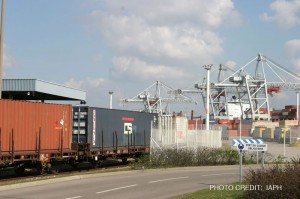 Intermodal: Intermodal shipping combines cargo movement in container by rail, truck and ship. This method eliminates the exposure to damage from handling when the cargo is transported between distant inland points and the ship. The cargo moves from door to door in the same container, without unnecessary handling between transportation modalities.
Intermodal: Intermodal shipping combines cargo movement in container by rail, truck and ship. This method eliminates the exposure to damage from handling when the cargo is transported between distant inland points and the ship. The cargo moves from door to door in the same container, without unnecessary handling between transportation modalities.
